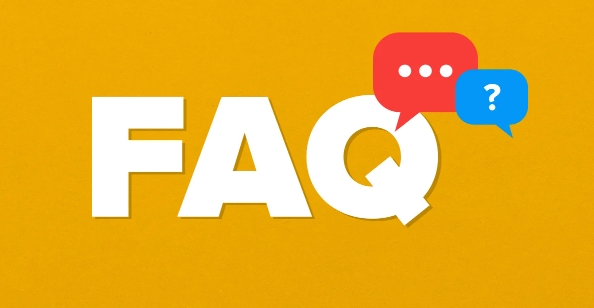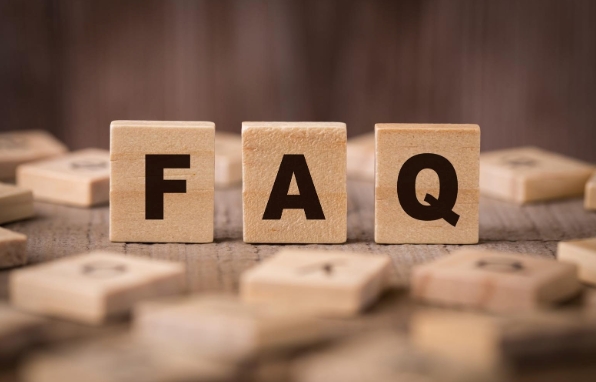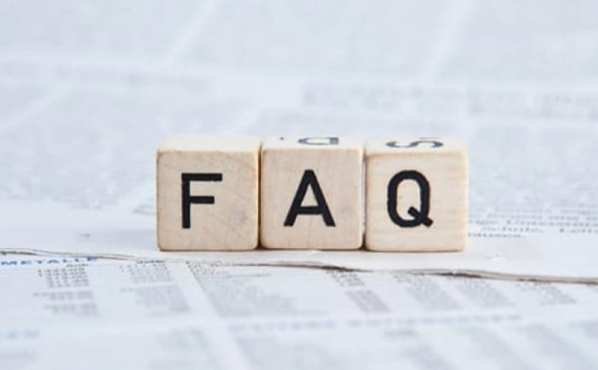The key to making a bootable USB drive is to select the right image file, use reliable tools, and set up the BIOS correctly. 1. Prepare a legal system image (such as Windows or Ubuntu official ISO) to ensure source security and version adaptation; 2. Select appropriate tools (such as Rufus, Ventoy, UNetbootin or official tools), pay attention to selecting the correct ISO file and target USB drive; 3. Enter the BIOS/UEFI settings, adjust the startup sequence, and set the USB device to the first boot item, and switch to Legacy/UEFI mode if necessary. Each step needs to be carefully checked to avoid misoperation resulting in data loss or startup failure.

It is actually not difficult to make a bootable USB drive. As long as the steps and tools are right, there will basically be no problems. The key is to select the right image file, use reliable production tools, and ensure the settings are correct.

Prepare the system image file
Before you start, you have to have a legitimate operating system image file (ISO file). For example, the official ISO of Windows or the mirror of Linux distributions such as Ubuntu.
To confirm that the source is reliable, it is recommended to download it from the official website to avoid downloading the tampered mirror that causes installation failure or security issues.
In addition, different versions of system images are suitable for different devices and uses, such as the difference between 32-bit and 64-bit, long-term support version (LTS), etc. You must see your needs clearly when choosing.

Choose the right tool
Currently there are several commonly used tools that can help you turn an ordinary USB drive into a bootable disk:
- Rufus : The most commonly used free tool under Windows, with a simple interface and intuitive operation.
- Ventoy : If you need multiple system images to coexist on one USB drive, Ventoy is a good choice.
- UNetbootin : Suitable for Linux users and also supports some Windows images.
- Official tools : such as Microsoft's Media Creation Tool, designed for creating Windows installation disks.
When using these tools, be careful to select the correct ISO file and target USB disk. Don't mess with the drive letters, otherwise other disks may be formatted incorrectly.

Set the BIOS/UEFI startup sequence
After the production is complete, insert the target computer and try to boot from the USB drive. At this time, you may need to enter the BIOS or UEFI to adjust the startup sequence:
- Press the specified key when powering on (usually F2, F12, Del or Esc, depending on the brand)
- Find the "Boot" or "Start" option
- Move the USB device to the first position in the boot sequence
- Save and exit, the computer will automatically boot from the USB drive
Some new computers are in UEFI mode by default, while older systems may need to switch to Legacy mode to recognize. If it cannot be started, you can try to switch between these two modes.
Basically that's it. The whole process is not complicated, but every step needs to be carefully checked, especially when selecting disks and mirror files, it is easy to rewrite the wrong data if you are not careful. As long as you operate carefully, the success rate is very high.
The above is the detailed content of How to create a bootable USB drive. For more information, please follow other related articles on the PHP Chinese website!

Hot AI Tools

Undress AI Tool
Undress images for free

Undresser.AI Undress
AI-powered app for creating realistic nude photos

AI Clothes Remover
Online AI tool for removing clothes from photos.

Clothoff.io
AI clothes remover

Video Face Swap
Swap faces in any video effortlessly with our completely free AI face swap tool!

Hot Article

Hot Tools

Notepad++7.3.1
Easy-to-use and free code editor

SublimeText3 Chinese version
Chinese version, very easy to use

Zend Studio 13.0.1
Powerful PHP integrated development environment

Dreamweaver CS6
Visual web development tools

SublimeText3 Mac version
God-level code editing software (SublimeText3)

Hot Topics
 How to create a cumulative curve graph in Python?
Aug 23, 2023 pm 08:33 PM
How to create a cumulative curve graph in Python?
Aug 23, 2023 pm 08:33 PM
The ogive graph graphically represents the cumulative distribution function (CDF) of a set of data, sometimes called a cumulative frequency curve. It is used to examine data distribution and discover patterns and trends. Matplotlib, Pandas, and Numpy are some of the libraries and tools provided by Python for creating otive graphics. In this tutorial, we will look at how to use Matplotlib to generate ogive graphics in Python. To create a cumulative curve chart, we need to import the required libraries. In this example we will use Matplotlib, Pandas and Numpy. Matplotlib is a popular data visualization library for creating in Python
 How to create a family with Gree+
Mar 01, 2024 pm 12:40 PM
How to create a family with Gree+
Mar 01, 2024 pm 12:40 PM
Many friends expressed that they want to know how to create a family in Gree+ software. Here is the operation method for you. Friends who want to know more, come and take a look with me. First, open the Gree+ software on your mobile phone and log in. Then, in the options bar at the bottom of the page, click the "My" option on the far right to enter the personal account page. 2. After coming to my page, there is a "Create Family" option under "Family". After finding it, click on it to enter. 3. Next jump to the page to create a family, enter the family name to be set in the input box according to the prompts, and click the "Save" button in the upper right corner after entering it. 4. Finally, a "save successfully" prompt will pop up at the bottom of the page, indicating that the family has been successfully created.
 How to create a constant in Python?
Aug 29, 2023 pm 05:17 PM
How to create a constant in Python?
Aug 29, 2023 pm 05:17 PM
Constants and variables are used to store data values ??in programming. A variable usually refers to a value that can change over time. A constant is a type of variable whose value cannot be changed during program execution. There are only six built-in constants available in Python, they are False, True, None, NotImplemented, Ellipsis(...) and __debug__. Apart from these constants, Python does not have any built-in data types to store constant values. Example An example of a constant is demonstrated below - False=100 outputs SyntaxError:cannotassigntoFalseFalse is a built-in constant in Python that is used to store boolean values
 How to personalize your iPhone on the latest iOS 17
Sep 21, 2023 am 08:17 AM
How to personalize your iPhone on the latest iOS 17
Sep 21, 2023 am 08:17 AM
How to Personalize Calls on iPhone Apple’s iOS 17 introduces a new feature called Contact Posters that allows you to personalize the look of your call screen on your iPhone. This feature allows you to design a poster using selected photos, colors, fonts, and Memoji as contact cards. So when you make a call, your custom image will appear on the recipient's iPhone exactly as you envisioned. You can choose to share your unique contact poster with all your saved contacts, or choose who can see it. Likewise, during a call exchange, you will also see other people's contact posters. Additionally, Apple lets you set specific contact photos for individual contacts, making calls from those contacts
 How to create a folder on Realme Phone?
Mar 23, 2024 pm 02:30 PM
How to create a folder on Realme Phone?
Mar 23, 2024 pm 02:30 PM
Title: Realme Phone Beginner’s Guide: How to Create Folders on Realme Phone? In today's society, mobile phones have become an indispensable tool in people's lives. As a popular smartphone brand, Realme Phone is loved by users for its simple and practical operating system. In the process of using Realme phones, many people may encounter situations where they need to organize files and applications on their phones, and creating folders is an effective way. This article will introduce how to create folders on Realme phones to help users better manage their phone content. No.
 How to create pixel art in GIMP
Feb 19, 2024 pm 03:24 PM
How to create pixel art in GIMP
Feb 19, 2024 pm 03:24 PM
This article will interest you if you are interested in using GIMP for pixel art creation on Windows. GIMP is a well-known graphics editing software that is not only free and open source, but also helps users create beautiful images and designs easily. In addition to being suitable for beginners and professional designers alike, GIMP can also be used to create pixel art, a form of digital art that utilizes pixels as the only building blocks for drawing and creating. How to Create Pixel Art in GIMP Here are the main steps to create pixel pictures using GIMP on a Windows PC: Download and install GIMP, then launch the application. Create a new image. Resize width and height. Select the pencil tool. Set the brush type to pixels. set up
 How to create a Gantt chart using Highcharts
Dec 17, 2023 pm 07:23 PM
How to create a Gantt chart using Highcharts
Dec 17, 2023 pm 07:23 PM
How to use Highcharts to create a Gantt chart requires specific code examples. Introduction: The Gantt chart is a chart form commonly used to display project progress and time management. It can visually display the start time, end time and progress of the task. Highcharts is a powerful JavaScript chart library that provides rich chart types and flexible configuration options. This article will introduce how to use Highcharts to create a Gantt chart and give specific code examples. 1. Highchart
 How to create a verification code image using PHP?
Sep 13, 2023 am 11:40 AM
How to create a verification code image using PHP?
Sep 13, 2023 am 11:40 AM
How to create a verification code image using PHP? CAPTCHA is a commonly used method to verify whether the user is a human and not a machine. On websites, we often see verification code images, which require users to enter random characters or numbers displayed on the image to complete operations such as login, registration, and commenting. This article will introduce how to use PHP to create a verification code image and provide specific code examples. 1. PHPGD library To create a verification code image, we need to use PHP's GD library. The GD library is an extension for processing images.





